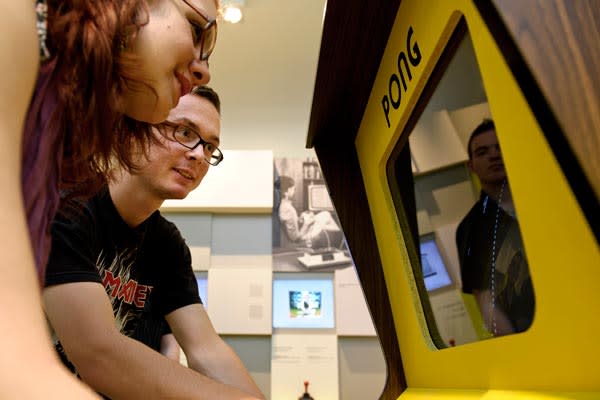How Atari's Pong started the video game revolution 40 years ago
Forty years ago, a simple game of bat and ball ignited the video-game revolution - but Atari's creation, Pong, nearly never happened.
In August 1972, Nolan Bushnell and his company Atari created something interesting - a demo game designed to see if the hardware engineers at the company could actually make a game.
There were no microchips, processors or graphics hardware, and the engineers had never seen a video game. Pong was meant to be a demo, but it ignited an entertainment revolution.
It was to finally release on November 29, 1972 - and sold so quickly that Bushnell says he sold 300 cabinets in an hour.
The demo was manually built from electrical components - and the company that made it was eccentric to say the least.
Bushnell was described by ex-employees as attending board meetings in a T-Shirt saying 'I love to f**k', and smoking joints openly in meetings.
[Related: Halo creator reveals first glimpse of new game]
His company would epitomise the slacker management style of California tech start-ups years later.
Rock music filled the production line, rumours about marijuana-fuelled board meetings spread and the legend of Pong was one of Atari’s biggest claims to fame - the other being an employee by the name of Steve Jobs.
The demo game was intended to lead the way to Bushnell’s dream - to create a driving simulation. The game - which involved two bats and a ball - was beamed on to a screen and players simply competed for points like a game of tennis.
The demo was called Pong and it was eventually released as an arcade cabinet, becoming one of the most successful and influential video games in the world. Competitive, two player gaming had never been so simple, addictive or as exciting.
The creation and release of Pong wasn’t easy however. Atari was contracted to make a video game and a pinball machine for Bally Midway during the development cycle of Pong but, after discovering the success of Pong in testing sessions, they convinced Bally Midway that they could build a better game, not wanting to lose the game to someone else.
Shortly after Atari convinced Bally Midway to wait for their next game project, Bally Midway terminated the entire contract, meaning Atari and owned the rights to Pong. The bluff had worked.
The prototype Pong model consisted of a wooden box, a second hand black and white Hitachi TV and the electrical components to drive the game.
During one year, a staggering 3,500 Pong arcade cabinets were made and sold after Bushnell sold 300 cabinets in one hour after his first attempt at a sales call.
At this point in time, Nintendo was making traditional playing cards and the game development firm behind big budget epics like Metal Gear Solid and Pro Evolution Soccer were making juke box machines in Japan. Atari and Pong had created something that would define video games forever and Nolan Bushnell knew it.

 Yahoo News
Yahoo News 



